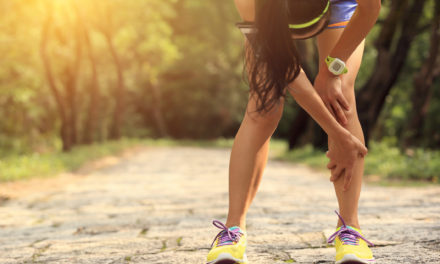Finding the best workout shoes among so many choices at the store can be a chore. Shoes aren’t like jeans or dresses, and eyeballing your feet in a mirror won’t tell you how they’ll feel 30 minutes into a cardio routine. Yet, ensuring a proper fit from heel to toe is crucial to keeping your feet happy when you exercise. Even the most minor irritations can result in chafing and blisters during long workouts. Knowing all the important fit and comfort indicators will ensure long-term comfort. We asked Dave Welsh, the owner of the Running Company in Haddonfield, Moorestown, and Mullica Hill, N.J., to share some of his tricks of the trade.
Know what you’re looking for
Make sure your shoes match your own arch’s contour and offer support that isn’t too rigid or high. You can’t get a good feel by just standing, says Welsh. “You have to run in the shoes.” The biggest fit difference between men’s and women’s shoes is the arch—the average woman’s heel is shorter and higher than a man’s—and the heel, which is narrower.
Make sure the fit is snug
Running in the shoes will also help you determine if there’s any heel slippage. If you feel the heel slip, you can do one of two things to address it: Get a narrower shoe, or lace your shoes up through the final eyelet to lock the heel down more firmly. The shoe uppers should feel snug and secure around your instep, explains Welsh.
But not too tight
Your toes should wiggle freely up and down, says Welsh. “We always look for half a thumbnail of space between your longest toe and the end of the shoe. And we ask our customers to stand up when we measure because your foot elongates when you stand. If the shoe is too narrow, you’ll feel the base of the little toe pressing up against the side of the upper.”
Come equipped
Bring your running socks and any orthotics or inserts you run in. These can all drastically change a shoe’s feel. And don’t worry if these result in a wider version of the shoe you want to buy. “We’ve found that about one out of every five women we fit is a wide,” says Welsh. “Just about every shoe manufacturer makes wider versions of each model now, which means women have a lot more options when it comes to finding the right fit.”
Don’t worry if your feet aren’t normal
Less than 10 percent of the population has left and right feet that are the same size, says Welsh. So you have to accommodate for the bigger foot. “If you’re a woman with a bunion, for instance, a normal-width shoe may pinch in front, but a wider version of the same shoe will fit comfortably, and the extra room in the front will allow your toes to splay when you land.”
Get a little lift
Some recent studies say women need a little more cushioning in the heel than men do. “In the Kayano and Nimbus,” says Welsh, “Asics makes the women’s version three millimeters thicker in the heel than the men’s because the elasticity of the Achilles tendon changes as a women’s estrogen fluxuates.” When the heel of a shoe is built higher off the ground, the Achilles tendon doesn’t have to stretch as far when running or jumping.
Keep in mind
It used to be that the heels in athletic shoes were almost always twice as thick as the forefoot, setting up the heel to bear the brunt of the impact and putting the entire foot on a slope. Now, says Dave Welsh, you’re seeing shoe manufacturers bring the heels down and the forefeet up a little bit to create a more level platform—in most cases midsoles are about 66 percent less steep than they used to be, according to Welsh. The result takes the emphasis off the heel when it comes to impacting the ground.









